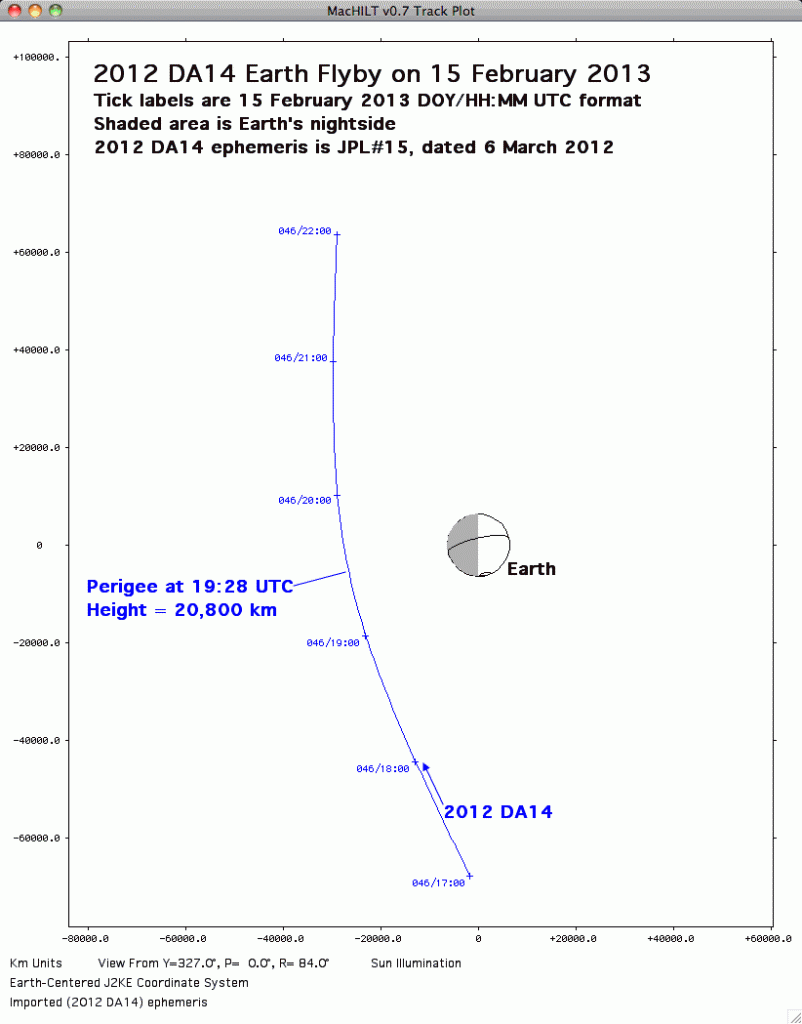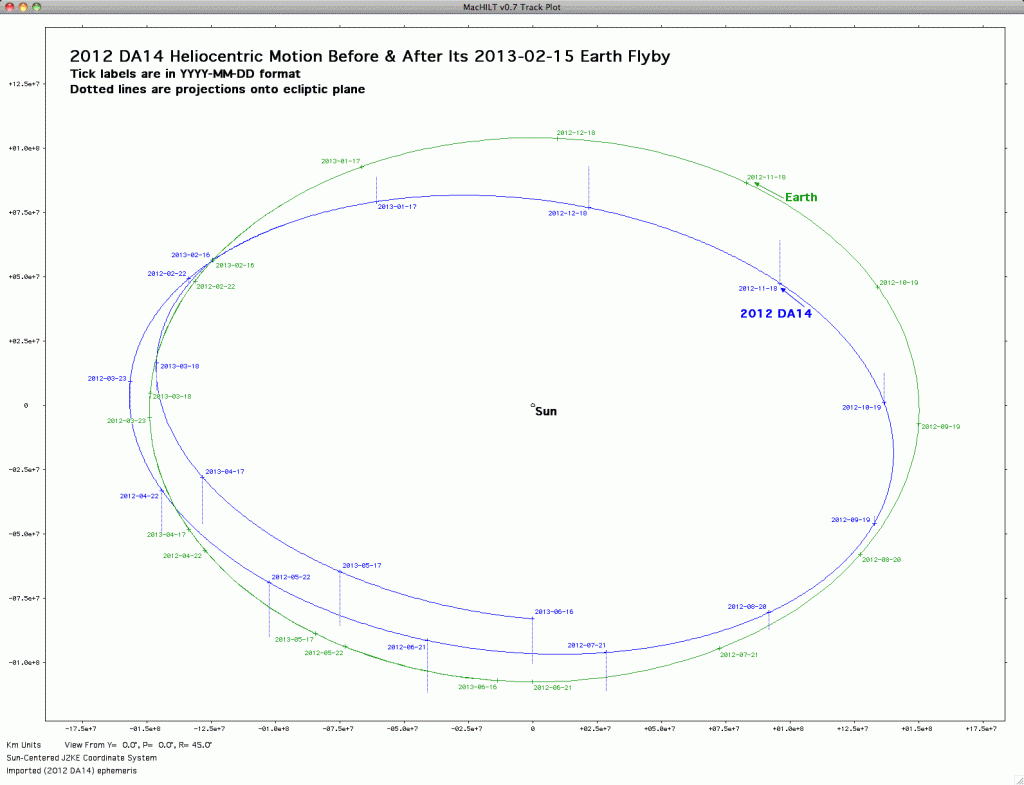(Follow-up from Dan Adamo)
It seems Nature has supplied a timely footnote for my 2011 AG5 risk corridor analysis. Attached are heliocentric and geocentric plots spanning NEO 2012 DA14’s close Earth approach on 15 Feb 2013. Recent Horizons prediction data (reference ephemeris JPL#15) for that event appear in the following table.

Converting CA Dist, MinDist, and MaxDist from AU to km units, I couldn’t help noticing the nominal perigee distance of 27,200 km is nearly the same as the minimum possible perigee (to 3-sigma confidence) of 27,100 km and yet is appreciably removed from the maximum possible perigee (to 3-sigma confidence) of 214,800 km.
Perigee distance uncertainty is confirmed by TCA3Sg’s value. At 73.09 minutes, that’s a lot of potential Earth-relative motion! The attached geocentric plot gives geometric perspective on perigee distance uncertainty. Earth’s heliocentric motion is directed roughly out of the plot at the viewer. Meanwhile, 2012 DA14 will nominally pass through Earth’s heliocentric orbit plane shortly after 19:28 UTC on 15 February 2013, moving roughly in the plot plane which also contains Earth’s center. For every minute this passage is delayed (or advanced), Earth will be located 1800 km farther in front of (or behind) the plot plane.

So, as indicated by the P_i/p value, there is no credible prospect for Earth collision (nor for a risk corridor plot) associated with this approach.
